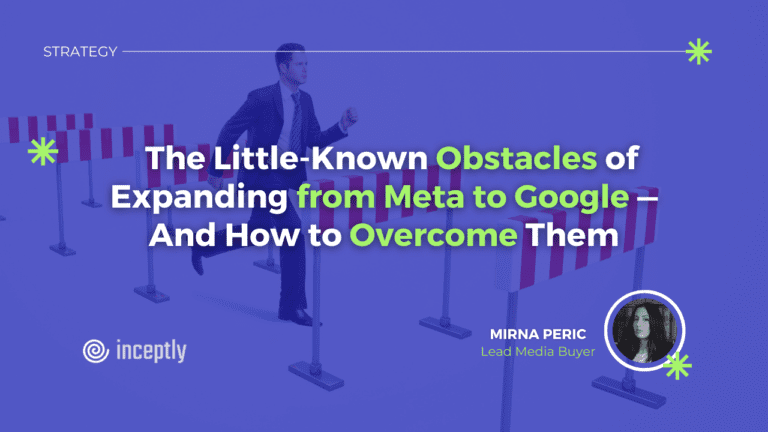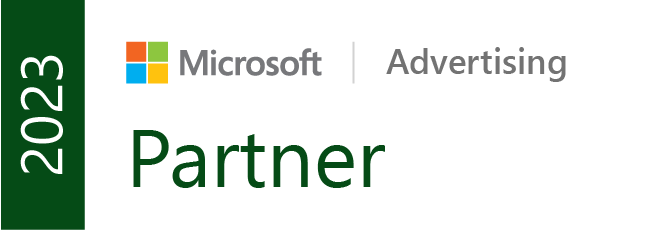
Expanding from Meta to Google Ads can reveal unique challenges, especially as advertisers adjust to different video campaign formats, targeting methodologies, and pricing structures. Google’s broader ecosystem offers a range of ad placements, from YouTube to Discovery and Performance Max, each requiring tailored strategies for creative, targeting, and budget allocation.
Here’s an in-depth look at the main obstacles advertisers encounter and actionable solutions to ensure a smooth and profitable expansion from Meta to Google.
Want results from YouTube Ads without the upfront risk?
Start now and only pay when they work!
Spots filling fast!
1. Adapting video creatives for YouTube vs. Meta’s quick-engagement formats
Challenge: Differences in user behavior between Meta and YouTube impact video performance
On Meta, users interact with fast-moving feeds that demand short, visually engaging videos. However, YouTube’s search-driven nature means users are generally prepared to spend more time watching informative or entertaining content. Because of this, advertisers often find that their top-performing Meta videos don’t perform as well on YouTube, where the audience expects a more substantial narrative.
Solution:
Crafting platform-specific content can significantly improve ad performance. For example, if a Meta ad’s success hinges on a quick product demo, consider expanding it to YouTube with a narrative approach, such as a detailed tutorial, in-depth product review, or a customer testimonial. YouTube’s VAC ad format allows advertisers to assess engagement on longer videos, providing critical insights into content performance while leveraging Google’s vast audience data. Experimenting with video length and format on YouTube and monitoring engagement metrics can identify which content resonates most with YouTube audiences, allowing brands to capitalize on higher viewer intent.
2. Leveraging Google’s algorithmic strengths with broad targeting in Video and Demand Gen
Challenge: Adapting audience strategy to maximize Google’s AI optimization
Advertisers who narrow their audience segments on Meta for precise targeting may find that the same approach limits Google’s AI-driven optimization potential. Google’s algorithm excels in a broader targeting environment, where it can analyze and adjust based on user behavior across its extensive properties, especially in Video and Demand Gen campaigns.
Solution:
Embrace Google’s strengths by using broader targeting in Video and Demand Gen campaigns. Instead of creating granular audience segments, opt for broader audience parameters to allow Google’s AI to identify and optimize high-value audiences. For example, a brand specializing in wellness products could target “health-conscious individuals” broadly, enabling Google’s algorithms to refine targeting based on user intent and behavior. Broad targeting gives the algorithm room to explore various audience subsets, capturing nuanced engagement trends and maximizing ROI.
3. Advanced attribution: Tracking broad audience conversions across Google and Meta
Challenge: Accurately measuring conversion paths across platforms
As audience targeting broadens, attribution tracking becomes more complex. Since users often interact with both Meta and Google ads before converting, it’s essential to maintain clear visibility into multi-channel attribution paths.
Solution:
Google Analytics 4 (GA4) provides robust cross-platform attribution capabilities that integrate Meta and Google data. Through GA4’s Cross-Channel Conversion Paths and Predictive Analytics, advertisers can track audience engagement across both platforms. For example, GA4’s attribution model can identify high-converting segments from both Google and Meta, helping advertisers adjust their spend based on complete multi-channel insights. This holistic view can also illuminate interactions where Meta drives awareness that later leads to a Google-based conversion, giving advertisers the data they need to optimize and unify their cross-channel strategy.
4. Budget efficiency strategies: Leveraging cross-platform data for smarter bidding
Challenge: Aligning higher CPCs on Google with data from Meta to improve Google’s bidding
While Meta can yield significant reach on a lower budget, this doesn’t always translate well on Google’s platform.
The CPC for Google Search Ads can be prohibitively high—especially in competitive sectors like finance, health, and SaaS—often costing 50-80% more per click compared to Meta Ads. However, few advertisers realize that data from Meta campaigns can actually inform smarter keyword and bid adjustments on Google, especially when using insights from high-engagement audiences on Meta.
On Google, targeting too low of a CPC, especially in Video campaigns, can lead to low-quality placements or “junk traffic,” where ads reach uninterested audiences. With Google’s average CPC for video campaigns typically ranging between $1 and $6, advertisers should aim to strike a balance that ensures quality placements without overspending
Solution:
To avoid junk traffic, aim for a CPC that aligns with industry standards and is competitive enough to reach quality audiences. Start with Google’s smart bidding strategies, such as Target CPA or Maximize Conversions, which dynamically adjust bids to capture high-value viewers without overspending. Additionally, using Custom Audiences informed by Meta’s high-engagement segments can help refine Google’s targeting. For example, if an advertiser finds a strong “home fitness” audience on Meta, they can set up similar Custom Segments on Google Ads to capture audiences with related interests, ensuring that CPC is spent on qualified leads rather than low-value impressions. Monitoring CPCs and adjusting as necessary allows advertisers to stay in a “sweet spot,” reducing costs while maintaining high-quality traffic.
Unlock real results with YouTube ads, risk-free!
Zero upfront cost—pay only for results.
Limited availability.
Want more content like this?
Don’t miss out on the latest news and updates from the world of Direct Response advertising! Subscribe to our newsletter today 👇

Mirna Peric, Lead media Buyer
Mirna is a top-notch Media Buyer with years of experience and millions of dollars in revenue-generating ad spend to prove it. Her insatiable curiosity combined with a strategic mindset helps her stay ahead of the game when scaling our clients' offers.
Like this post? Let's continue the conversation!
Get in touch with us by shooting us a quick email or tagging us on LinkedIn or Instagram, and sharing your thoughts. Your feedback helps us keep our blog relevant and interesting.
Get Our Newsletter
Need Help?
Get in touch with us for an insightful evaluation of your ads + actionable tips to help amp up your direct response revenue



